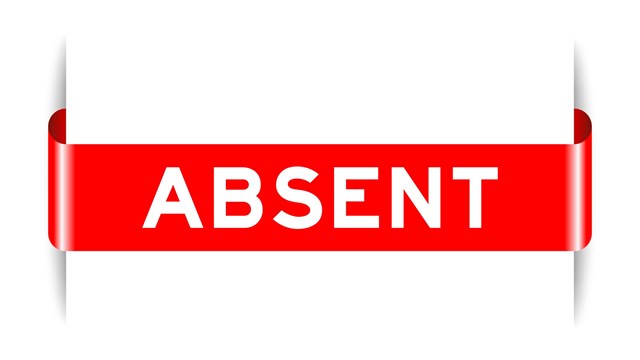The headline of a recent Walpole, Massachusetts newspaper article read: “Fight between Walpole selectmen cuts meeting short.” The first sentence of the article stated, “Selectmen came to verbal blows on Tuesday night, prompting other board members to cut the meeting short as two of their colleagues took the altercation outside.”
It sounds like it could have been from an episode of a fictitious reality show entitled Boards Meetings Gone Wild, where viewers watch meetings that are out of control, overlong, unproductive or, as in this case, downright hostile. Even humorist Dave Barry said of meetings, “If you had to identify in one word the reason why the human race has not achieved, and never will achieve, its full potential, that word would be 'meetings.' ”
The scary part is that this is reality. In some cases, board meetings turn into ‘verbal blows’ and, in some extreme cases, even physical confrontations. Board meetings can get very heated. Different ideas, differences of opinion and different agendas can cause so much stress in a meeting where people want to give their opinions, solve problems, make decisions, vote and get back home to their families. As a result, board meetings should have a protocol or policy in place for when things get a little tense and tempers start to flare.
The most likely culprits behind contentious meetings, says Joseph Balzamo, president of Alliance Property Management in Morristown, New Jersey, tend to be the ones that hit homeowners in the wallet: fee increases, major projects like roofs and boilers, crime or environmental issues—“things that affect health, safety, and well-being.” Meetings can turn for the worse, he notes, when emotions, rather than fact, take center stage.
“If I know there’s likely to be a volatile meeting, I try to make sure the board members are prepared for that up front, and don’t let people get to you. They have to understand they’re going to be dealing with emotion,” he says. “If you’re going to assess people $10,000, they’re going to be upset. You have to make them understand why you’re assessing them $10,000. Don’t let them get to you in terms of emotion, but start discussing with them in terms of facts.
“You want the board to go into a meeting being prepared,” Balzamo says. “I try to have a pre-meeting with the board before having what we believe might be an emotional meeting. Get everybody on the same page, why we’re doing what we’re doing, and be prepared to answer all the questions. If they’re not prepared, then they can get emotionally involved as well.”
“Sometimes meetings run too long or get contentious because the board or manager isn’t prepared properly,” agrees Thomas Chilenski, president of Cedarcrest Property Management in Fairfield, New Jersey. “Maybe one or two board members want to review every possible situation, positive or negative. Sometimes that’s a good thing, but most of the time it’s a waste of time. The most important thing is you must have a solid agenda, and the agenda has to be followed.”
In his book, The Perfect Board, author Calvin Clemens writes, “The Perfect Board”is probably a goal that can never be reached. Given the manner in which people work with one another, it is doubtful that consistent harmony can be achieved,” he writes. “But maybe that is the goal. Working together, moving the organization forward, instead of individual or selfish pursuits.”
Working together, of course, involves a degree of trust—among the board members themselves and between board members and the owners or shareholders they represent. “My view is that in terms of avoiding conflict, the answer is transparency—making everything known or open to be known,” says attorney David Byrne, a partner with the law firm of Ansell Grimm & Aaron, PC in Princeton, New Jersey. “My experience is that transparency removes the conspiracy theory, where people come to the meeting and want to catch someone doing something wrong. You need to create a psychology where everybody believes that everybody’s trustworthy, and has nothing to hide.”
To that end, it’s best for everyone to know what is going to be discussed well before the meeting begins, and then to have accurate minutes available for future review.
Surprise!
Surprises are good for birthday parties, wedding announcements and improv flash mobs–but board meetings? Not so much. Nobody can predict everything, but if things are done properly, there should be no total surprises at a meeting.
“Have an agenda to follow, and stick to it,” Chilenski suggests. “Put time limits on agenda items and conversations. If something goes over and you have to table it for the next month’s meeting, that’s what you do. If you get into a stalemate, it’s better to move on and make progress on other issues.” When things start getting bogged down, he says, “it should be the association manager who pushes things on—but you don’t want to step on the board members’ toes.”
With a solid agenda and an open-door attitude, board members and owners alike will know what to expect at a meeting.
“You always have to be transparent and have that open line of communication,” Chilenski says. “You have to provide open meetings, so everybody has the opportunity to know what’s going on.”
Byrne concurs. “Have board meetings that are open to tenants and owners. Have minutes prepared; they are not transcripts, but corporate records of decisions that were made, so that it’s not burdensome to make the minutes. Have the minutes available at the next meeting. Use websites, newsletters, things like that” to keep everyone informed of board activities. “Lay it out there and tell owners that for the most part, they are free to look at whatever they want.”
A well-ordered agenda helps eliminate any surprises that might crop up to blindside the board and owners, and also keeps the meeting from running on and on… and on. So how long should a meeting last? “I tell homeowner associations an hour-and-a-half,” says Balzamo. “An hour’s too short; some people would like to think it’s enough time, but it’s not. Usually an hour and a half, hour and 45 minutes works.”
Given that many meetings are held after board members return from a long day at work, it’s easy to see how long meetings can become out-of-control meetings. “You have to take into consideration that normally these meetings are in the evening, after work,” Chilenski explains. “The ideal meeting shouldn’t go over two hours. Once you break that two-hour barrier, people become tired, disinterested, and a little more combative. You can get a lot done in two hours if everybody is prepared.”
The type of meeting doesn’t matter; these guidelines apply everywhere, otherwise chaos can ensue. A few years ago in Birmingham, Alabama, a school board meeting ended up with police reports being filed when one board member punched another. And when a recent town meeting in Massachusetts dragged on toward midnight, one resident found an effective—albeit illegal—way to call a halt to the debate: He pulled the fire alarm, emptying the building and bringing the meeting to an abrupt end.
One way to guide a potentially Boards Gone Wild meeting back onto a productive path may be to consult Robert’s Rules of Order, a classic work of wisdom that has been helping keep parliamentary procedures on track for more than a century. The rules are simple: they spell out in explicit detail how to run a meeting, form the proper way of introducing a new item of business, vote on it, and close the floor for discussion. However, not every board uses the rules.
“I advocate at least a loose use of Roberts Rules,” Chilenski says. “You don’t have to follow it to a T, but the general gist is, you should only be recording actions and certain items for the agenda. You should not be transcribing conversations and discussions. Everything should be generalized. Once it’s brought before the board, you want to record the action, who makes the motion, and the vote.”
“The background of every meeting is Robert’s Rules, to some extent,” Balzamo says. “The larger meetings are a lot more structured with Robert’s Rules.It depends on the size of the association; the larger ones are more formal, the larger ones are also more likely to have an attorney at the meeting.”
Keeping the Peace
In the book, Community Associations: A Guide to Successful Management, by Stephen R. Barber, CPM and Vickie Gaskill, CPM, the authors suggest several tips to make a board meeting more productive. One important one: “Enforce ground rules.” They write, “For example, use courtesy, let one person speak at a time, allow no interruptions and have no ridiculing of another person’s opinion. Members frequently show up for meetings simply because they have a passion for one particular issue. If the president has established some basic ground rules at the beginning of the meeting, he or she will have the support of the majority of participants when the time comes to intercede and close the discussion.”
An open door for board meetings does not mean that it’s “open mic” night in the meeting room. The right to attend a board meeting is not the same as a right to speak at one.
But giving owners an opportunity to get things off their chests can help create that feeling of transparency that’s so essential within the community. “I do recommend allowing people to speak,” Byrne says. Having a time limit for comments will keep the meeting from dragging on, but even with limits, boards should be reasonable. “You don’t call police if a guy speaks for three minutes and you only allow two,” he says. “A lot of it is like kindergarten—you’ve just got to help everybody get along.”
“It’s good to give them a forum where they know they’re going to get a 15- or 20-minute question and answer period ... and each homeowner will get five minutes to speak, at best,” Balzamo says.
After that, Chilenski urges, “Either the meeting chairperson or manager has to say, ‘Your time has expired, wrap it up, let’s move on. Other people have to have an opportunity as well.’ When it comes down to it, if they’re being unruly, the entire crowd will tell them to shut up or get out. I don’t think I’ve had anybody forcibly removed—yet. When you have a certain amount of people in attendance, the majority does take control when it gets out of control and the right thing usually does happen.”
“Basically, if you’re doing everything you can and it’s still getting out of control,” Balzamo says, “then either the board or the manager will say, ‘Look if this is going to continue, we’re going to have to adjourn’—which kind of settles people down. I’m not going to sit there for two hours and get berated by people. It’s not going to happen. I’ve been at meetings where a homeowner association has had no choice but to have an off-duty policeman there, but those are really big associations with a lot of people attending—and everyone is afraid of the cop standing in the back of the room.”
Dave Barry made a joke about meetings, but the bottom line is that board meetings are no laughing matter and need to be organized, efficient and effective.
Associate Editor Pat Gale also contributed to this article.







Leave a Comment